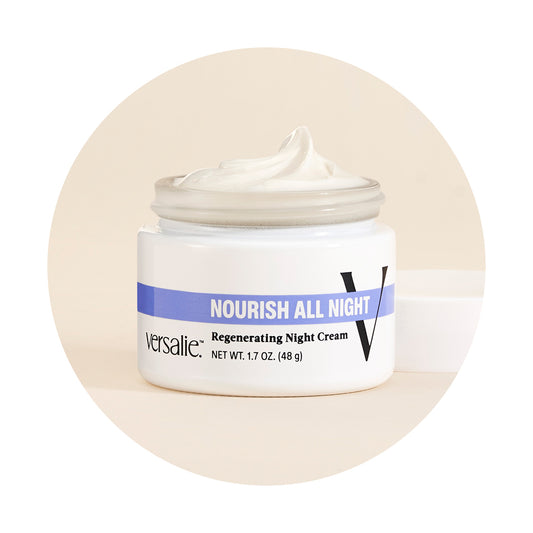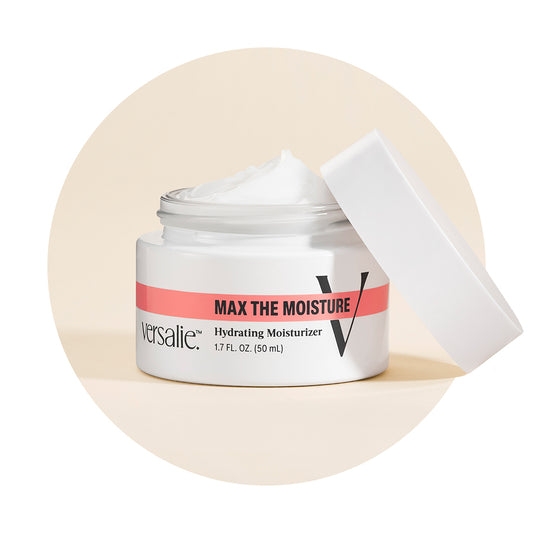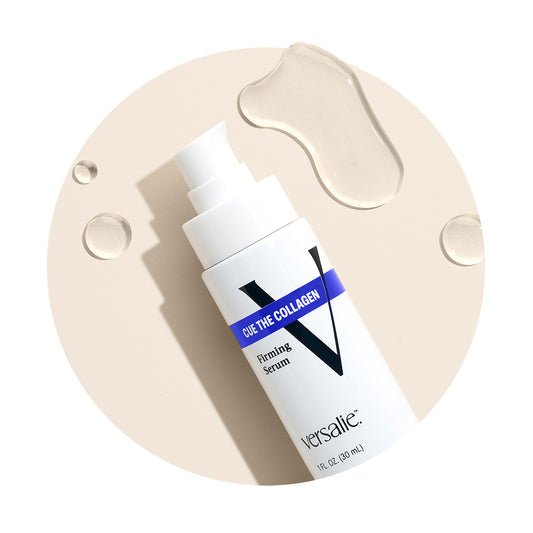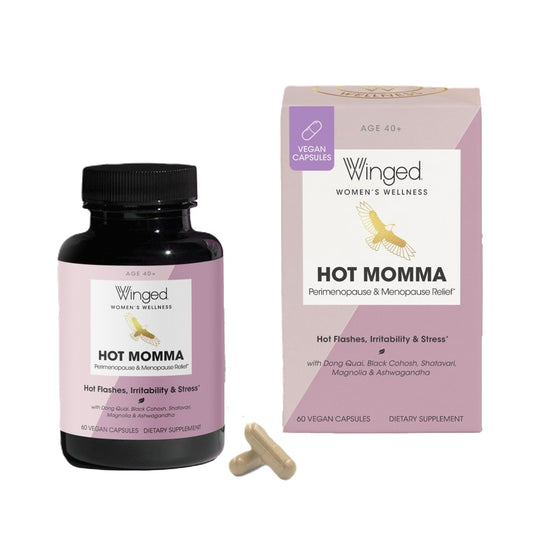Menopause is a natural change that happens to people who were assigned female at birth (AFAB). Menopause happens when the ovarian follicles eventually stop production of reproductive hormones. So, if you have ovaries, you’ll experience menopause at some point in your life. Everyone who goes through menopause has a different experience.
The transition leading up to, and immediately following, ovarian retirement can entail significant fluctuations in hormones leading to more symptoms. Common perimenopause symptoms can include hot flashes, mood changes, sleep disturbances, and abnormal bleeding. But for people who are transgender, non-binary, or gender diverse (what we’ll call ‘gender diverse’ for the rest of the article), there can be unique and distinct challenges.
To better understand the complexities of gender diverse experiences, let’s cover a few definitions:
- Sex. Usually expressed as “male” or “female”, sex is based on what your body parts are like, like your genitals and reproductive organs.
- Gender identity. This is about self-identifying along the continuum of masculine and feminine. It’s mostly decided by the culture we live in and is often assumed by our sex at birth.
- Cisgender. This means that the gender you feel matches the sex you were assigned at birth.
- Transgender man. Someone who’s assigned female at birth who identifies as a man.
- Transgender woman. Someone who’s assigned male at birth who identifies as a woman.
- Gender binary. The idea that sex and gender are two distinct categories — male and female — that are opposite and disconnected categories.
- Non-binary individuals. People whose gender identity doesn’t sit comfortably with ‘man’ or ‘woman’. They may identify as some combination of both, or something different altogether.
- Gender diverse/non-conforming individuals. Individuals who don’t self-identify or present in a manner consistent with societal norms based on the gender binary.
- Gender dysphoria. Distress that’s caused by a discrepancy between a person’s gender identity and that person’s sex assigned at birth.
Remember, these are just words to help us talk about these things. The most important thing is to be kind and respectful of everyone, no matter what their gender identity.

How does hormone therapy impact menopause for transgender individuals?
Hormone therapy, such as masculinizing doses of testosterone therapy for transgender men, can alter the experience of menopause. Testosterone therapy changes the hormonal environment and ovarian function, potentially reducing or eliminating symptoms like hot flashes and irregular periods. However, gender diverse individuals who stop testosterone therapy during the perimenopause timeframe, are on low doses or testosterone therapy, or aren’t on hormone therapy are more likely to experience menopause symptoms, which can be challenging or induce gender dysphoria.
It's important to remember that the effects of hormone therapy on menopause can be different for each person. This is because everyone’s body is different, and the type and amount of hormone therapy used can vary. Each person should work closely with their healthcare provider to determine the most appropriate treatment options for their needs and to manage bothersome menopause symptoms that may arise.
What are unique challenges faced by gender-diverse individuals during the menopause transition?
Gender-diverse individuals may face challenges related to their gender identity, social and cultural factors, and personal factors. These challenges can influence their experience of menopause, which may not align with traditional expectations. Additionally, gender-affirming surgical interventions like oophorectomy (removal of the ovaries) can cause sudden menopause, leading to more severe symptoms.
What treatment options are available for gender-diverse individuals going through menopause?
Treatment options for menopause vary depending on an individual’s symptom profile, gender identity, hormone status, and personal goals. There are a lot of different ways to treat menopause symptoms. For those that decide to take medication, some people take hormones, while others try non-hormonal therapies. Some people also notice improvements by making changes to their lifestyle, like eating healthier or exercising more. The best way to find out what's right for you is to talk to a doctor who knows about gender diversity and menopause. Consider checking out the LBGTQ+ Healthcare Directory or OutList LGBTQ+ Affirming Healthcare Directory to find LGBTQ+ friendly healthcare near you.

Here are some treatment choices for menopause symptoms (particularly hot flashes):
- Non-hormonal treatments. From my clinical experience, I have found that selective serotonin reuptake inhibitors (SSRIs), serotonin-norepinephrine reuptake inhibitors (SNRIs), gabapentin, and neurokinin B antagonists (fezolinetant) to be helpful in relieving hot flashes. However, every patient’s response is different. Your healthcare provider is in the best position to advise what’s right for you.
- Menopausal hormone therapy (MHT). MHT is approved by the FDA to treat hot flashes and night sweats, prevent osteoporosis, treat early-onset menopause, and treat moderate to severe vaginal dryness. In most cases, healthy individuals can use MHT within 10 years of menopause or younger than 60. Though not officially MHT, testosterone may help alleviate menopause symptoms. Talk to your doctor about the risks and benefits of MHT or testosterone before starting treatment.
- Progesterone-only therapy. It may be used alone or in combination with estrogen to help relieve symptoms, treat abnormal uterine bleeding, and protect the lining of the uterus (endometrium). Progesterone can be an effective hormonal option if a person wishes to avoid estrogen.

How can gender-diverse individuals manage symptoms like vaginal dryness and discomfort during menopause?
Early menopausal individuals, especially those on testosterone therapy and/or those who have undergone removal of their ovaries, may experience similar genital, sexual, and urinary symptoms, like the ones experienced by cisgender women going through natural menopause. This includes vaginal dryness, irritation, and pain or bleeding with vaginal penetration. Symptoms don’t often improve without treatment. But luckily several options exist, none of which require systemic hormones. Again, talk to your doctor if you have any questions or concerns about these options or what other options may be available.
- Nonhormone therapies may also help provide relief:
- Vulvovaginal moisturizers and lubricants. Lubricants can be applied right before sex and can help reduce friction and discomfort. Moisturizers are applied inside the vagina multiple times a week to help provide a continuous moisturizing effect.
- Regular stimulation of the vulva and vagina. This can help promote blood flow to the genital area. Natural secretions can help maintain vaginal health.
- Penetrative sexual activity, with or without a partner. This may help to maintain vaginal width, length, and tone.
- Pelvic floor physical therapy and vaginal dilators can help treat very tense pelvic floor muscles.
- Hormone therapies may also be considered, although they haven’t specifically been studied in transgender individuals. But in my clinical experience, they’re very effective in treating genitourinary syndrome of menopause (GSM) in transgender men on testosterone:
- Low-dose vaginal estrogen therapy. Applied at a low dose and absorbed locally, it is non-feminizing. It can help restore vaginal blood flow, decrease vaginal pH, and improve the thickness and elasticity of the vulvovaginal tissues.
- Vaginal DHEA. It’s a suppository that’s inserted once daily.
- Ospemifene. It’s an oral medication that’s taken daily.
Menopause is a big change that happens as we age. It can affect how we feel, both in our bodies and in our minds. It’s important for both patients and providers to understand these changes and how different people are affected. Each person going through menopause deserves to receive compassionate, evidence-based care.
Learn more about Dr. Liss and our other Versalie advisors.








